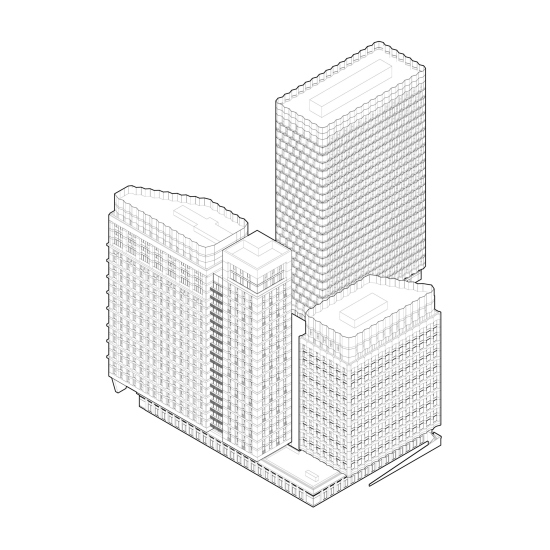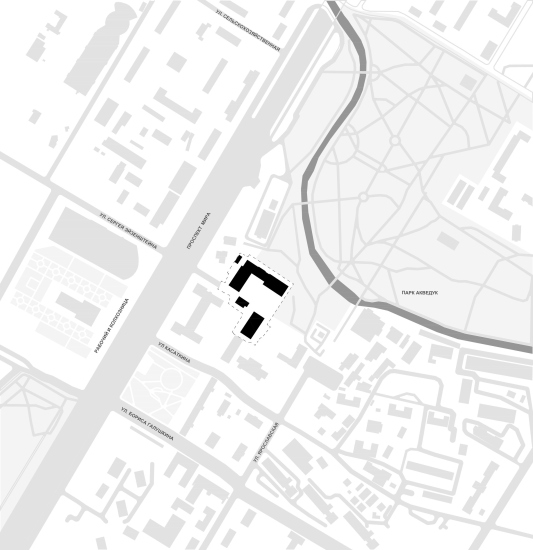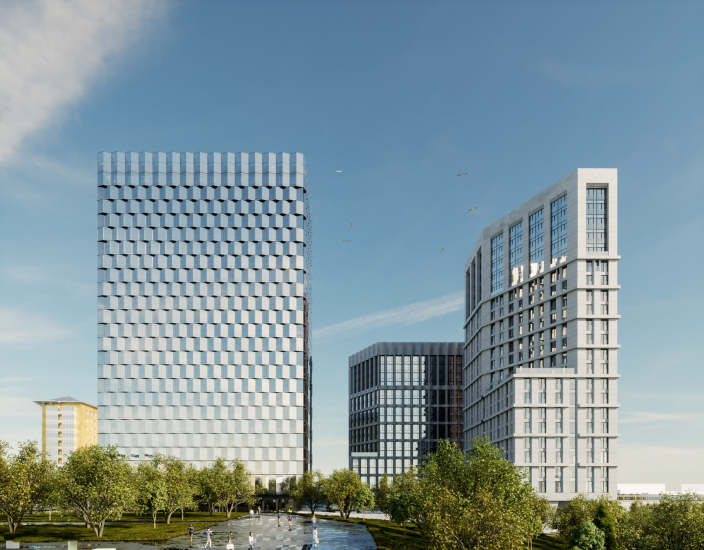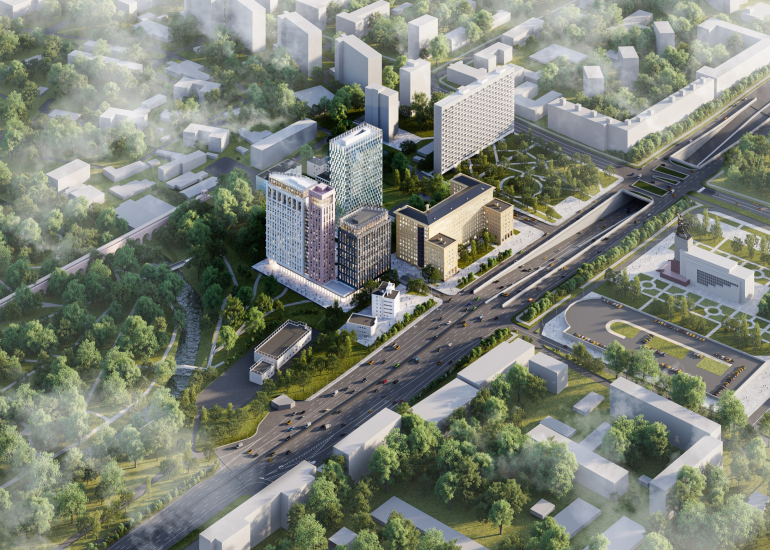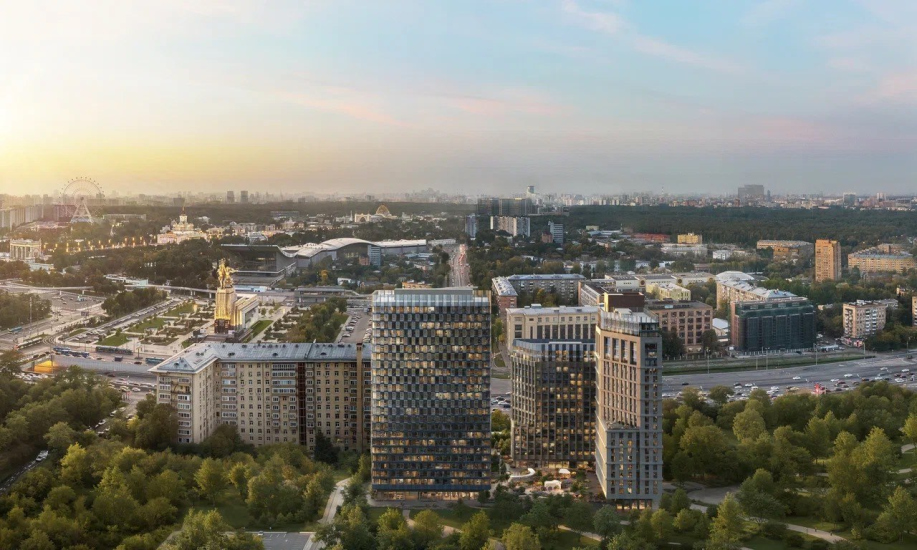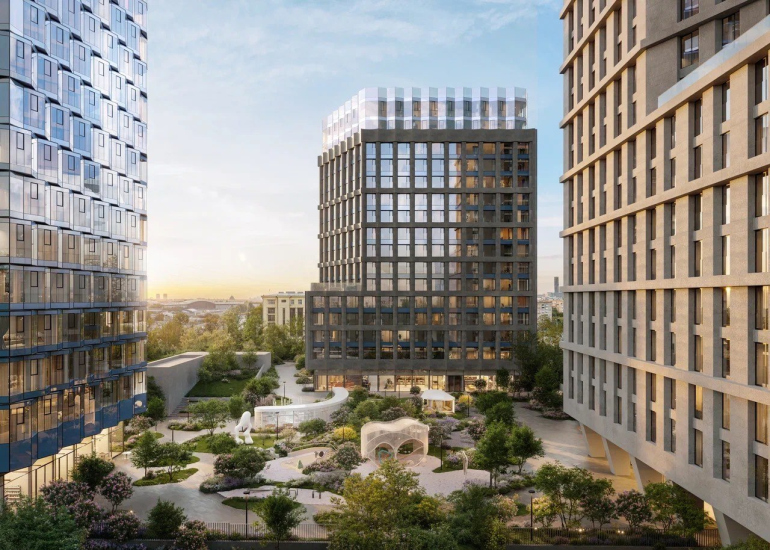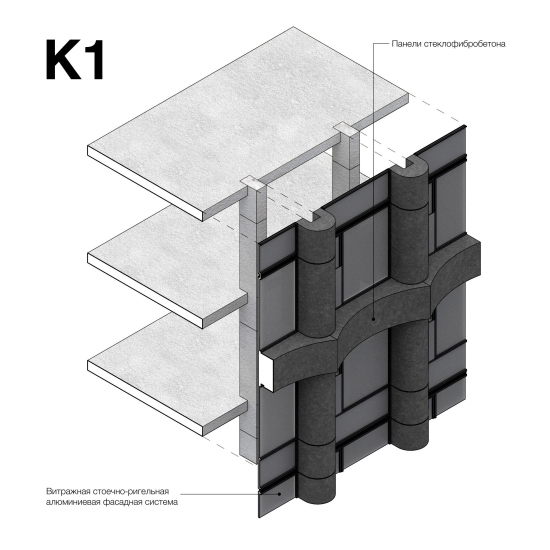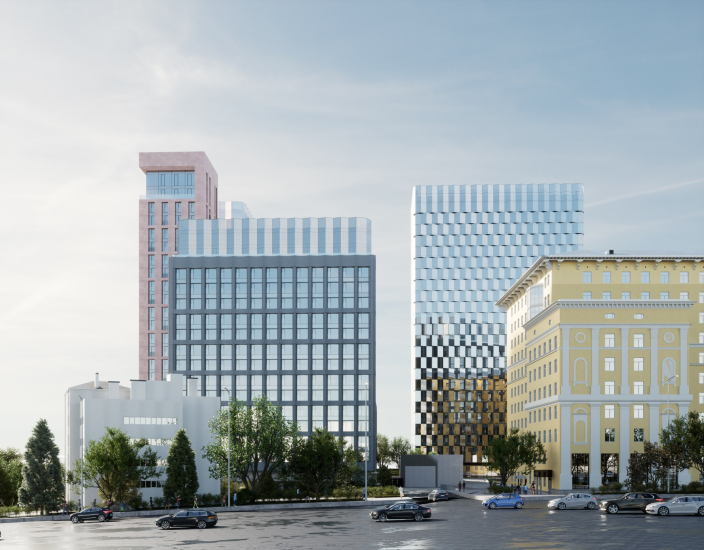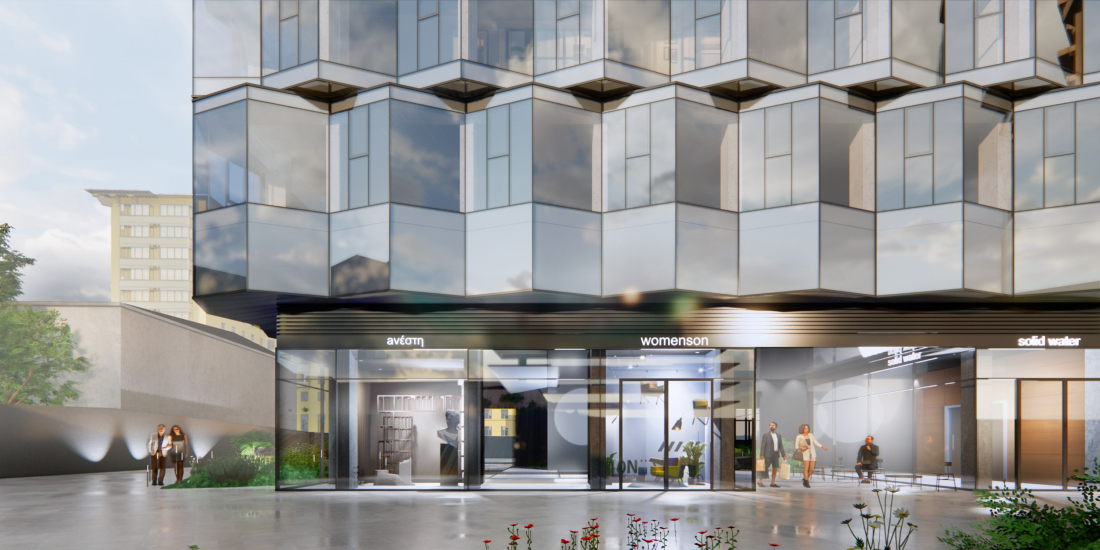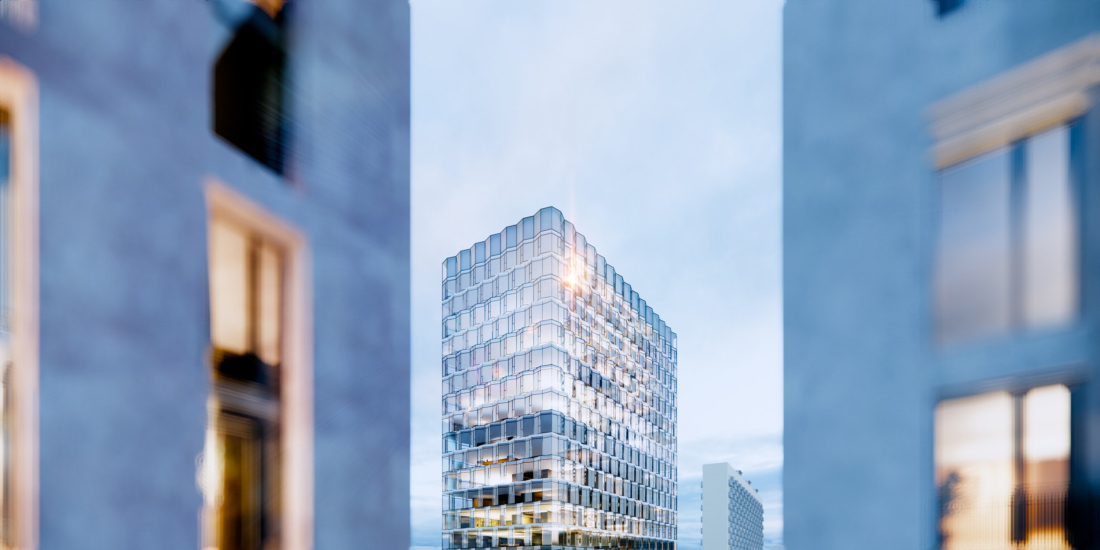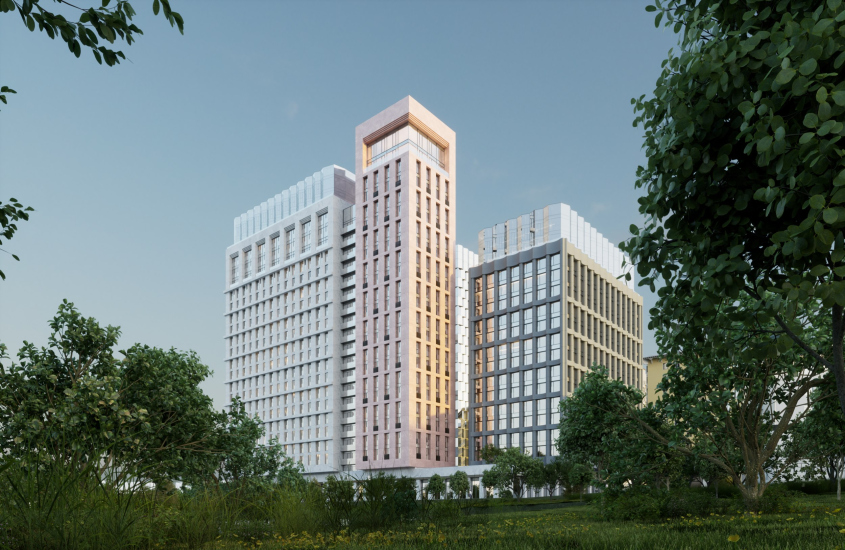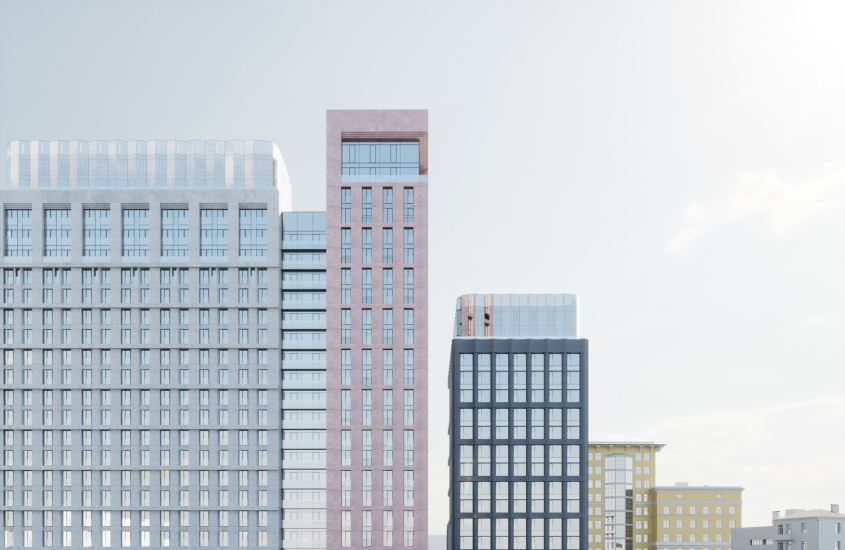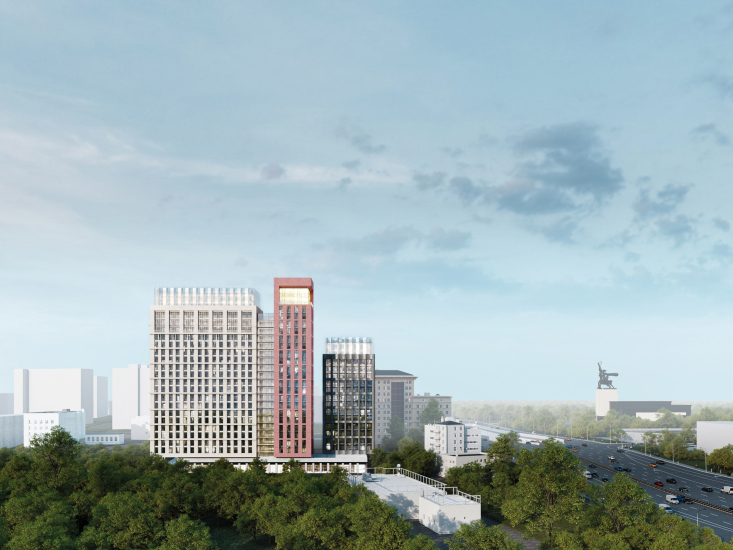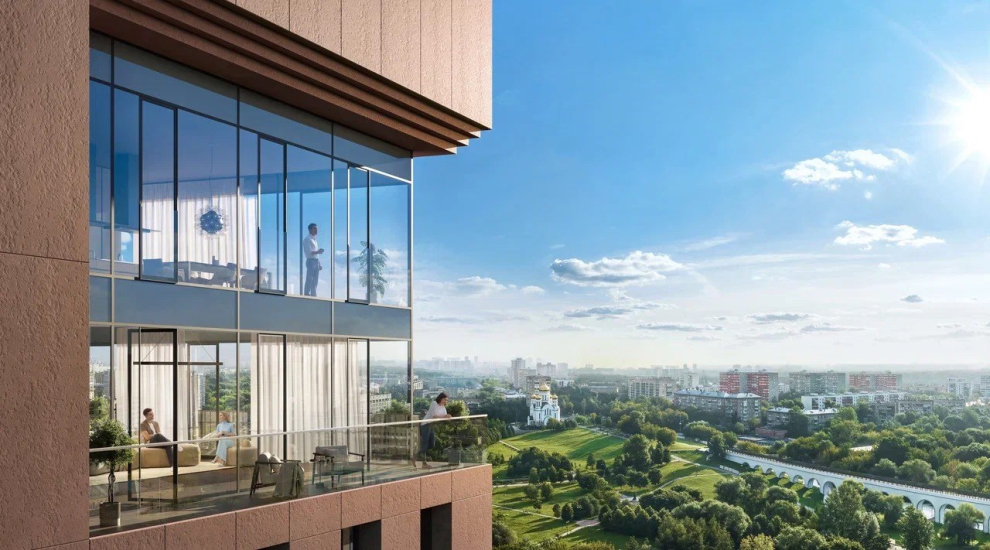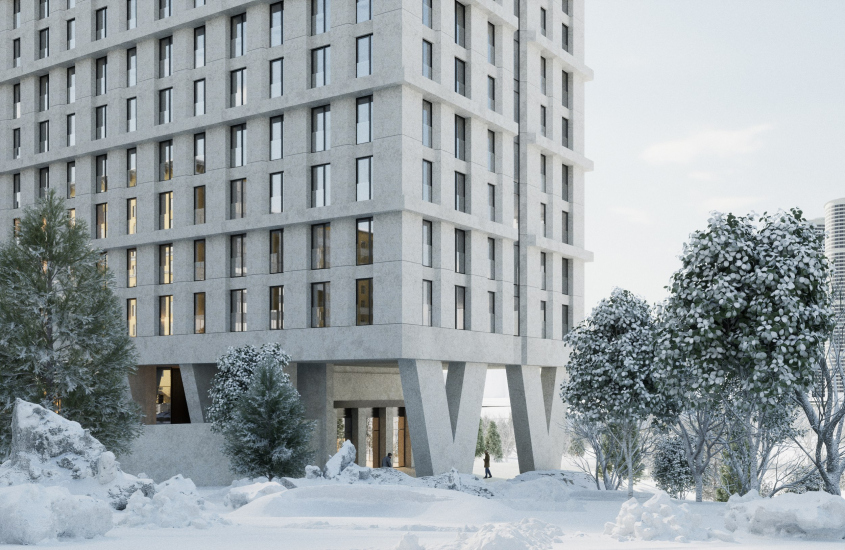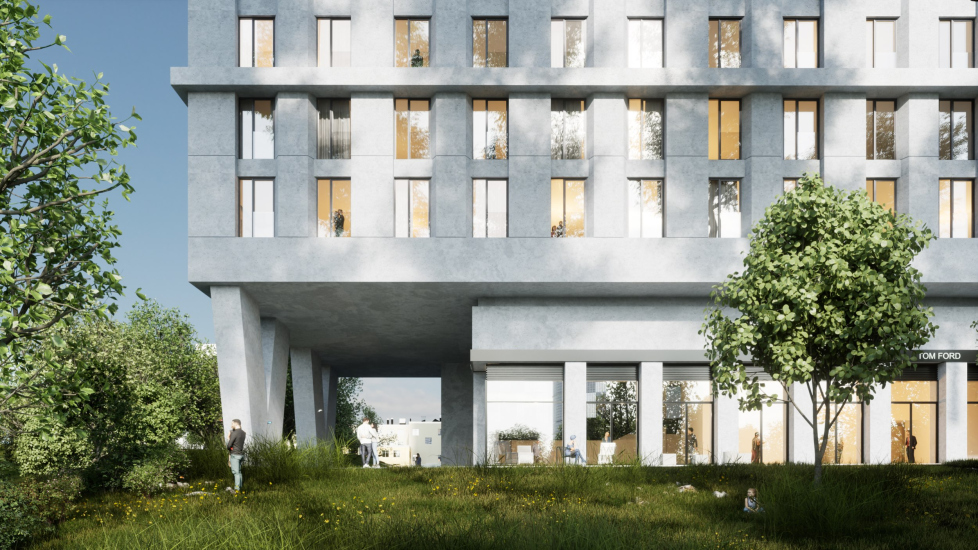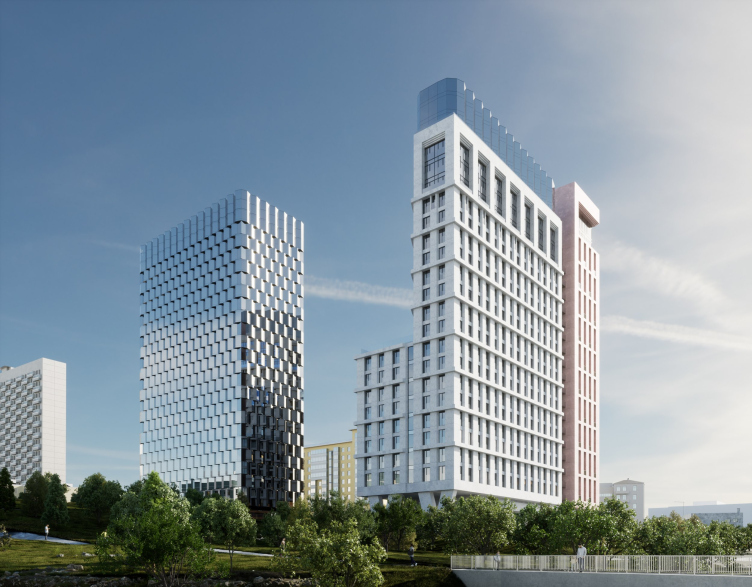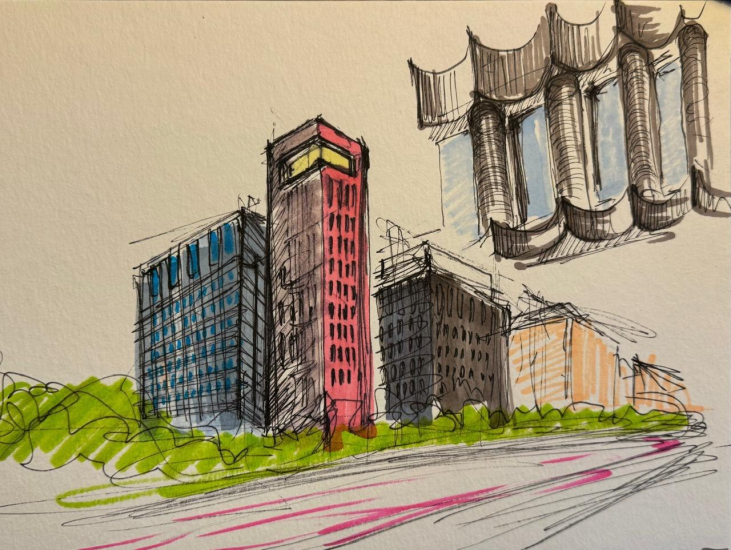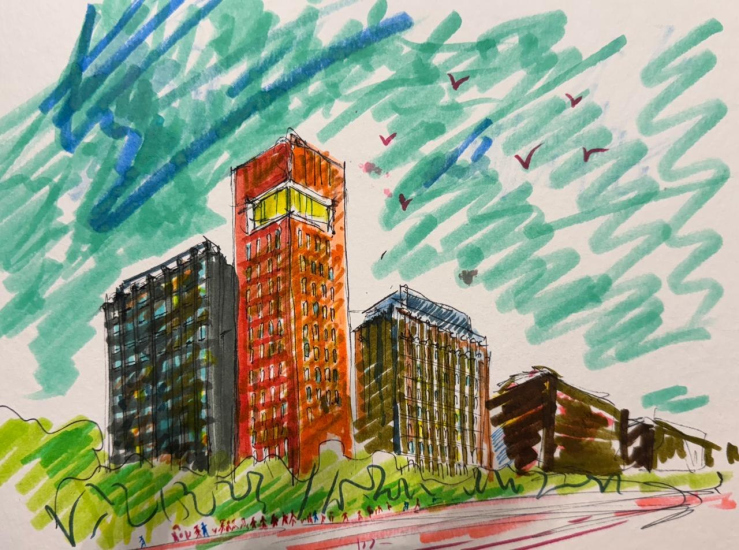The architects responded to this eclectic environment by “rhyming” each building of MIRA with its immediate surroundings – taking cues from whichever landmark was closest. They also considered the views opening from each direction. The result is a set of buildings situated close together, sharing a similar underlying design logic, yet subtly varied in form and expression as a response to their specific context.
In practice, the project comprises two separate underground parking footprints and podiums. The larger one stretches along the edge of the river slope and actively engages with the topography, as the elevation drops by about 5 meters from west to east: the podium is taller at the back of the site and lower near the avenue. This single podium unites what are effectively two buildings – K1 and K2 – visually articulated as three volumes. At the southern end of the plot, tucked deeper into the site, stands a separate slab, K3. Thus, the site is well utilized, yet the central part retains a significant courtyard, enclosed but only partially – on two sides rather than all four.
Two buildings – K1 and the larger slab K2 – are sliced diagonally. At first glance, it might seem they share a single slicing plane, but in fact the cuts are parallel: the third building’s slice is shifted slightly farther south. Still, in reality they will read as a single diagonal gesture. The first cut, on K1, opens up sunlight access for Zholtovsky’s building; the second opens views to the east, toward the rising sun. There’s also a subtle western orientation, as the slice – starting at the tenth floor on K2 and at the sixth on K1 – runs almost perfectly along a west-to-east axis.
Otherwise, the buildings are oriented parallel and perpendicular to Mira Avenue, which here runs northeast at a 60-degree angle. The diagonal cut effectively “reveals” this orientation in the massing of the buildings themselves.
At the cut corners, triangular terraces are planned. Ideally, these will become shared open-air spaces for residents – at least for each individual building. That said, the inner courtyard is also generous in size. And, as noted earlier, the Rostokino park is just a few steps away.
Landscaping for the podium, courtyard, and surrounding grounds was designed by the architectural company Druzhba (“Friendship”), which incorporated a street-level retail zone within the complex and created pedestrian pathways leading to the riverfront and across the footbridge to the park. Within the development itself, a “Forest Trail” park will be planted – featuring shrubs, boulders, wild grasses, trees, a spring-like fountain, and swings.
Interestingly, the two buildings parallel to the highway are the ones that respond most sharply to their surroundings. The 15-story K1, located next to Zholtovsky’s 11-story building, echoes classical themes due to this proximity. Still, the reference remains abstracted and restrained: here we see rounded, semi-cylindrical columns, while the inter-floor cornices take the shape of concave, pointed waves. In contrast, Zholtovsky’s building has flat pilasters. The color palette is also deliberately divergent – dark, nearly black rather than the expected yellow. In other words, there’s no literal imitation – just a distant dialogue with classicism. Naturally, there are no capitals. And the uppermost floors shed any ornamentation entirely: they’re fully glazed, which both lightens the overall appearance and allows for additional square footage and additional height.
The facades of the other two buildings develop not classical, but modernist themes. Building K3, set deep within the block and farthest from Mira Avenue, runs parallel to the iconic “House on Stilts”. Its facades are predominantly glass – though not in flat panes, but angled and folded like creases or ridges, as visible in both floor plans and renderings. In press releases, the facade is described as “dynamic”. The zigzag rhythm of its edges subtly echoes the balconies of the 1968 building next door, forming a friendly visual dialogue between the two structures.
The most compositionally sophisticated façade belongs to Building K2, which faces the Rostokinsky Park. Building K2 consists of three distinct volumes: the primary residential block clad in light-gray stone, a pink tower, and, finally, a “glass” link between them.
The stone-clad portion is calm and orderly: horizontal and vertical joints of stone panels frame rectangular windows.
The pink tower is the visual landmark of the entire complex. In the urban context of Mira Avenue, with its constant stream of traffic, the tower plays the role of a beacon. Clad in pink stone, its top floors serve as a kind of observation deck, fully glazed to offer panoramic views. The penthouse in this zone also includes an open-air terrace.
The upper levels of all three buildings are compositionally set apart by generous glazing, helping to break up the massing and visually highlight the most prestigious apartments.
Two entrances to the residential complex are planned from the riverfront side. The entrance zone is flanked by V-shaped supports – an homage to the neighboring “House on Stilts”.
To sum up: MIRA Residential Complex belongs to a typology increasingly common in Moscow in recent years – high-rise developments with a dominant tower, in this case reaching 83.1 meters. The key benefit of this type is the ability to house a large number of residents in close proximity to parks and urban amenities.
What sets Kleinewelt Architekten apart in this dense format is their focus on compositional variety and volumetric interplay – building clusters with distinct but harmonized elements. And also their color palette: these architects frequently place black next to dusty rose and pale gray. Their signature muted emerald green is absent here, but it is more than compensated for by the lush greenery of the surrounding landscape.
MIRA residential complex
Copyright: © Kleinewelt Architekten
Another defining feature is the attention to detail. This is more or less a prerequisite for modern residential projects in Moscow: façades especially need a certain “spark” or distinctive flourish. In this case, that role is played by unusual black columns – responding to Zholtovsky’s white pilasters. They are one of the key design elements here, as can be seen even in the concept sketches. The way they are drawn – bold and expressive – speaks volumes.
But it’s not the only key element. There’s also the tower, the “accordion” building, the V-shaped legs… The ultramodern facades are carefully composed to correlate with nearby buildings – immediate neighbors. And this is what sets the complex apart from another local high-rise: Vladimir Plotkin’s Tricolor. That building is even taller – 190 meters – with varied forms and heights, but it’s wrapped in a continuous striped “skin”. It, too, enters into dialogue with the city and even with the “House on Stilts” – which becomes clear when you drive by it heading out of the city down Mira Venue. But Tricolor’s references are legible only from a distance – sometimes it feels like from two kilometers away.
The approach taken in MIRA is both similar and different. It’s shorter, more intricate, and its context is close at hand. It seems designed to “dissolve” the typical verticality of a tower into the urban fabric.
A metaphor comes to mind: imagine two students – one standing up straight in the balcony seats, the other raising a hand from the fifth row. That’s roughly the difference. And perhaps this difference was inevitable, shaped by the time and context that separate the two high-rises – built more than a decade apart.
Another key distinction: MIRA is turned away from the avenue. Its predecessors ceremonially frame one of the capital’s main arterial roads. In the new complex, that role is given to one of the three volumes – and the smallest one at that. The bulk of the apartments instead face the park. The main entrances are located there as well. The architects themselves have likened the development to an “island” – clearly referring to a sense of privacy.
All in all, MIRA appears to be an example of a “polite” high-rise. Not as tall as its neighbor, but closer to the center. Attuned to nearby landmarks, responding to them with a touch of playful defiance – but with care. A peaceful project on Mira Avenue.




